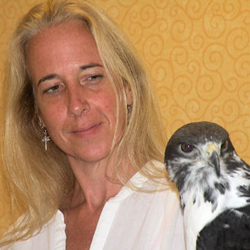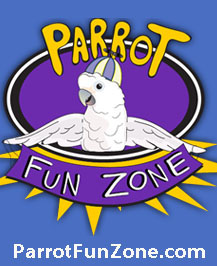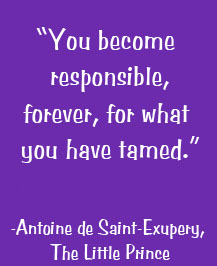 Auditory enrichment is one of the least utilized forms of enrichment for captive parrots. In our exploration of the various types of enrichment we need to ask some questions about this option. The first question to ask is what is auditory enrichment. Auditory refers to anything that can be heard. This could be outside noises or noises inside your home. Anything that your bird hears is considered auditory. The second question is why should I bother with auditory enrichment. When considering the natural history of birds you have to think about their environment in the wild. They are constantly listening for the approach of other birds or perhaps the approach of predators. Their sense of hearing is very strong. Based on where many of the parrots kept as pets live in the wild they need to have very acute hearing to remain safe. The upper level of the rainforest canopy provides the safety in height but it creates the need for excellent hearing. Eclectus parrots have been noted as having an extremely well defined sense of hearing. This is due to their dwelling in the uppermost canopy level. In addition to listening for predators, parrots need to be able to hear across great distances as they call to other members of their flock. These calls can include alarm calls, locator calls and simple informational calls. If there is danger the parrots need to alert flock mates. As parrots fly through the forest or across the savannahs they need to be in contact. If contact is lost they may call loudly to locate their flock members. Finally it’s always good to be able to hear well when your flock mates call that there’s food in the vicinity. Some parrots will fly many miles in a day, foraging for food sources. Once a spot is found with an adequate amount of food they birds will call other flock members to let them know that dinner is served. In captivity many of these auditory needs are filled due to the proximity of the other members of the flock or the people who live in the home. Providing auditory enrichment allows the parrots to express some of that naturalistic behavior in a captive setting.
Auditory enrichment is one of the least utilized forms of enrichment for captive parrots. In our exploration of the various types of enrichment we need to ask some questions about this option. The first question to ask is what is auditory enrichment. Auditory refers to anything that can be heard. This could be outside noises or noises inside your home. Anything that your bird hears is considered auditory. The second question is why should I bother with auditory enrichment. When considering the natural history of birds you have to think about their environment in the wild. They are constantly listening for the approach of other birds or perhaps the approach of predators. Their sense of hearing is very strong. Based on where many of the parrots kept as pets live in the wild they need to have very acute hearing to remain safe. The upper level of the rainforest canopy provides the safety in height but it creates the need for excellent hearing. Eclectus parrots have been noted as having an extremely well defined sense of hearing. This is due to their dwelling in the uppermost canopy level. In addition to listening for predators, parrots need to be able to hear across great distances as they call to other members of their flock. These calls can include alarm calls, locator calls and simple informational calls. If there is danger the parrots need to alert flock mates. As parrots fly through the forest or across the savannahs they need to be in contact. If contact is lost they may call loudly to locate their flock members. Finally it’s always good to be able to hear well when your flock mates call that there’s food in the vicinity. Some parrots will fly many miles in a day, foraging for food sources. Once a spot is found with an adequate amount of food they birds will call other flock members to let them know that dinner is served. In captivity many of these auditory needs are filled due to the proximity of the other members of the flock or the people who live in the home. Providing auditory enrichment allows the parrots to express some of that naturalistic behavior in a captive setting.
The easiest way to create a situation where auditory enrichment is occurring is to allow your parrot time to communicate in its own language. People are always asking what to do about their “screaming” parrots. My colleagues who deal with behavior management are asked about this issue at least once every time they speak. I am asked if enrichment can get parrots to stop screaming. It certainly can but I caution owners to make sure they offer opportunity for these vocalizations when it is appropriate. When the issue of the “screaming “ parrot arises I often ask what time of day the owner observes this behavior. Many times the answer is first thing in the morning and when the sun goes down. When this is the case I suggest that the owner take the opportunity for auditory enrichment. This calling at those times of the day is very naturalistic behavior. The parrots are waking up and calling to locate the other members of the flock. You may even cue your bird to this behavior and not even be aware that you are doing it. When you walk into your bird’s room or where the cage is located you probably call out a greeting. This is the same thing they’re doing only you probably do it a bit quieter. Allow some time for calling and then when it is time for quieter interactions offer praise and rewards for that quiet time. At the end of the day it is often a call to roost. This may be your bird telling you that it’s bedtime. By allowing this time you are providing an opportunity for enrichment that takes very little effort on your part. If you live in a small apartment or in close proximity to your neighbors you may want to warn them that the birds may be a bit loud at those times of the day but share with them why this is occurring. If the noise is an issue then you may not be able to offer this chance to your birds.
Many parrot owners play music for their pets or they leave the television on in a room to keep their parrots company. This is indeed auditory and sometimes visual enrichment but it doesn’t lead to naturalistic behaviors. When creating enrichment opportunities your should always try to keep naturalistic behaviors in mind. Consider offering a session of parrot calls for your pet. Many web sites offer free downloads of birdcalls. You can also purchase recordings of parrot calls on CD. In playing same species vocalizations for your parrot you are in fact doing some desensitization. If you bird is flighted and could possibly fly off one day you may have given yourself a good tool in getting that bird back. Sometimes in fly off situations playing vocalizations can call your bird down from a tree or other tall structure. So doing auditory enrichment will get your bird used to same species calls and this may be an added bonus.
You can also play natural sound recordings. These might include rainforest sounds or other nature recordings like frogs and bugs. On some occasions you might want to try playing predator vocalizations for your pet. Be careful when you offer this type of enrichment that your parrot is able to get away from the source of the sound and that you don’t leave the calls playing if your bird appears distressed. Short doses of negative stimuli are healthy for captive animals. You know your bird better than anyone else and you must be aware of how your bird is reacting. I was teaching a parrot enrichment workshop hosted by City Parrots in Leiden last February and showed the participants a device called the Identiflyer. It is a small hand held device that comes with cards that are inserted into the player. Those cards have recordings of many different types of birds including birds of prey, songbirds and waterfowl. I held up the device and pressed the button for the call of a Red Tailed Hawk. Many participants had brought their pet birds and at the time the birds were sitting quietly on perches at the back of the seminar room.
When I pressed the button and the hawk call was played all the parrots in the room sat up and took notice. I can say with a reasonable degree of certainty that most of those parrots had never heard a hawk let alone perceived one as a threat. Yet the hawk call was enough to get the blood pumping for those parrots. With the press of one button for the duration of less than ½ minute I had offered auditory enrichment to all the birds in the room.
A few final words on auditory enrichment. I’m sure most of you have experienced the parrot that picks up that one word that you would rather he didn’t and he repeats it over and over again. Use caution when providing auditory opportunities for your parrot. Don’t play sounds or vocalizations that you would rather not have “parroted” back at you. I’m sure your pets pick up enough of those noises on their own. Exercise care that you don’t offer stressful sounds too often and keep close watch on your birds before during and after any potentially stressful experiences. You are your bird’s best judge and you can spot the body language that tells you when your bird has had enough or is over stimulated. If you see those signs discontinue the opportunity. If you have a flock living at your house then auditory enrichment is one of the most cost effective methods of enrichment. You can provide for a large number of birds all at once and the cost is minimal if anything. So, now that you’ve heard my opinion of auditory enrichment, try some on your own. You may be surprised at what you hear from your feathered companions!
********************
Robin Shewokis is the owner of The Leather Elves, a company that designs and manufactures enrichment devices for animals in captivity. The Leather Elves started as a family business that created enrichment for companion parrots. After working with several facilities that housed collections of parrots Robin realized that there was a need in those facilities for enrichment targeting other species.
In 2000 The Leather Elves began working with zoos internationally to enhance the level of enrichment provided. Since then Robin has consulted at zoos in the US, Canada and Holland and has distributed enrichment products worldwide.
In the companion parrot community Robin has spoken at numerous parrot clubs, providing a workshop that helps companion bird owners create a stimulating environment for their pets. Robin also works to develop new enrichment products for companion parrots that will stimulate naturalistic behavior when presented. Robin has published articles on enrichment in national and international publications. She is the enrichment columnist for the Flyer, a quarterly publication of the International Association of Avian Trainers and Educators.
Robin is a member of The American Association of Zookeepers and The International Association of Avian Trainers and Educators. Robin works closely with the AAZK enrichment committee as an advisor and is a member of the IAATE enrichment committee. At the 2006 AAZK conference Robin received a certificate of appreciation for her contributions to the field of enrichment with regard to management of captive exotics.



















































































































































Comments powered by CComment